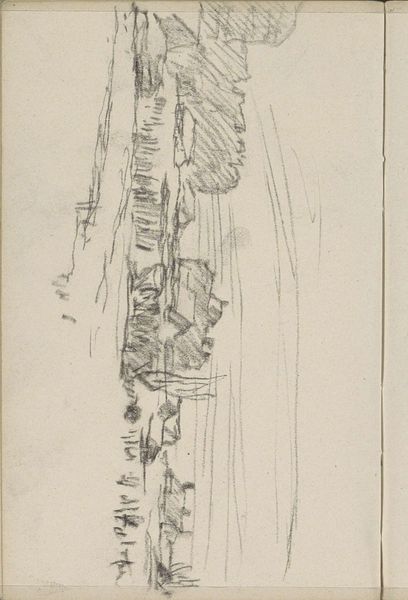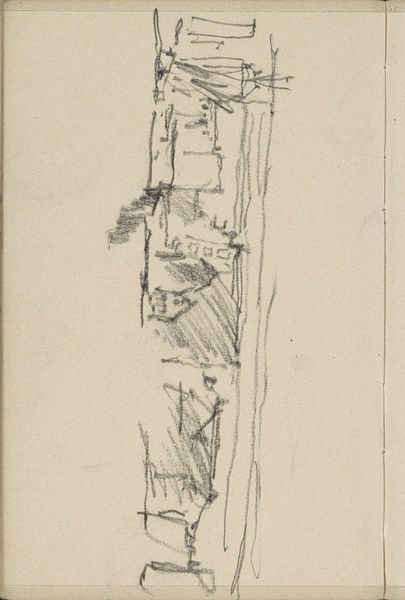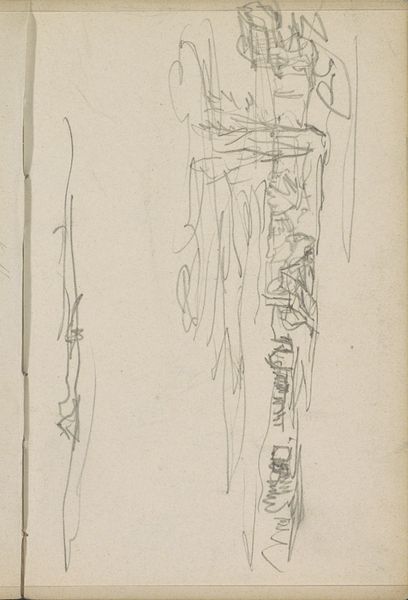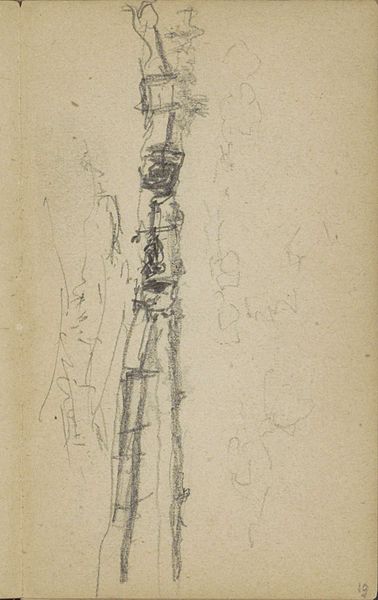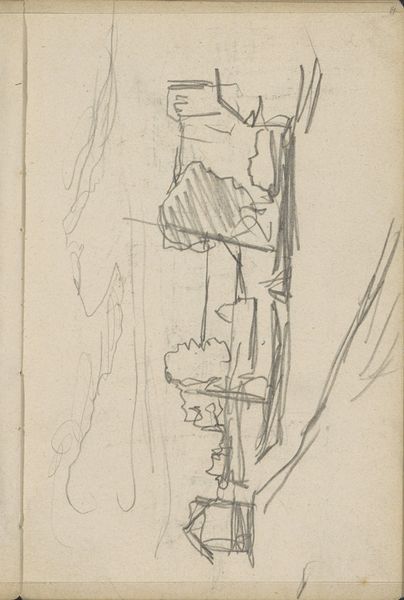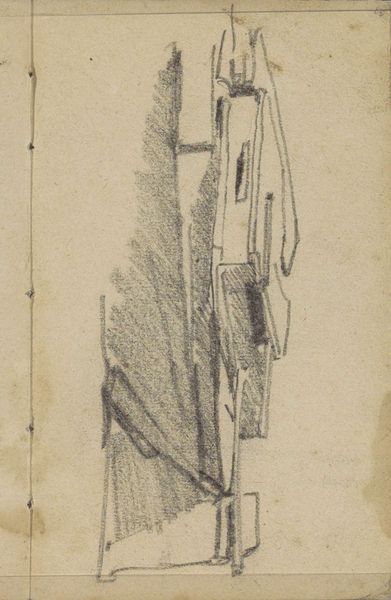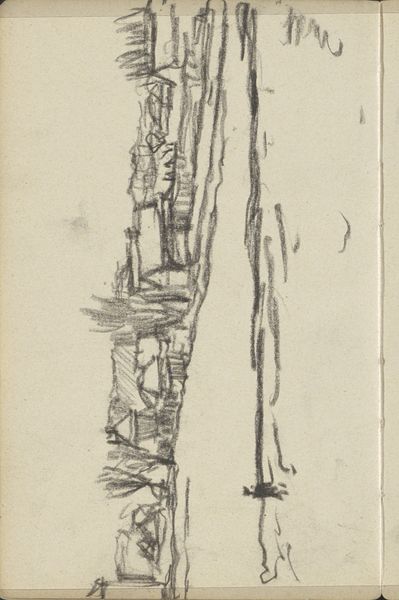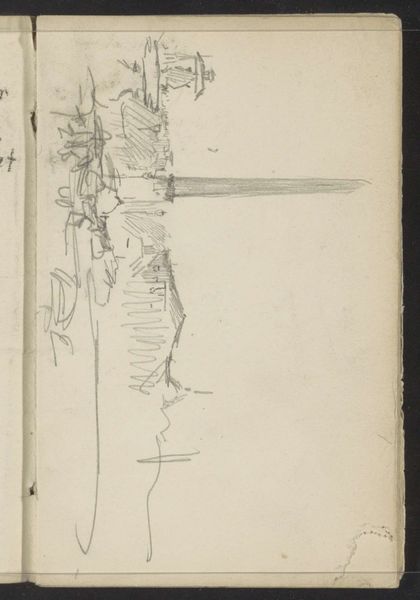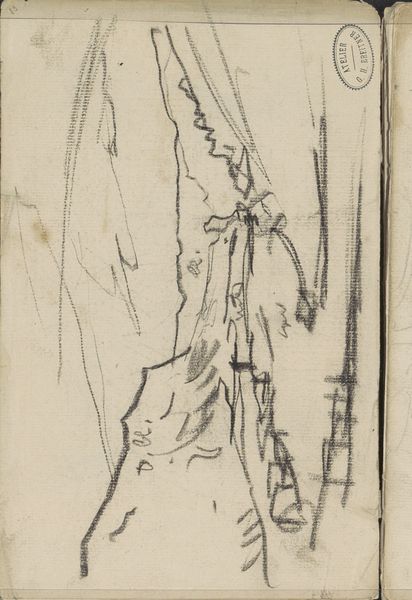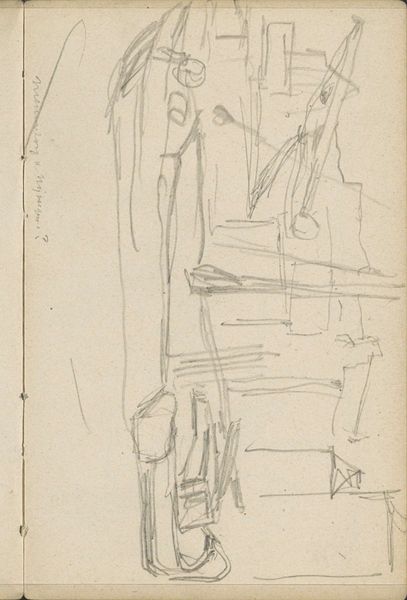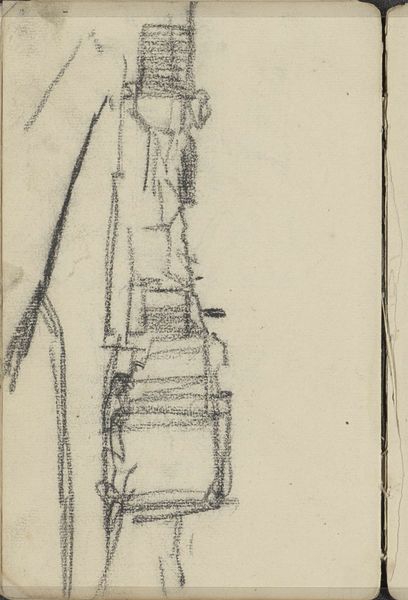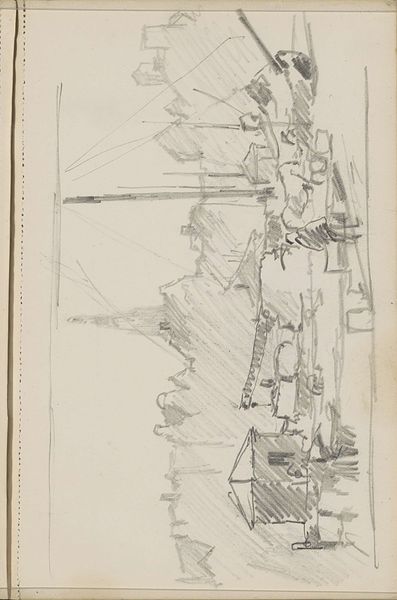
Landschap met bebouwing en figuren, mogelijk in de buurt van het Rustenburgerpad te Amsterdam 1907
0:00
0:00
georgehendrikbreitner
Rijksmuseum
Copyright: Rijks Museum: Open Domain
Curator: This is George Hendrik Breitner's "Landschap met bebouwing en figuren, mogelijk in de buurt van het Rustenburgerpad te Amsterdam," created in 1907. It’s a landscape drawing held here at the Rijksmuseum. Editor: Immediately, it strikes me as ephemeral—like catching a fleeting moment. The stark lines and muted tones evoke a kind of hazy industrial memory, a world almost forgotten. Curator: Precisely! It's rendered in pencil and ink on toned paper. You can see the quick, almost frantic energy of the lines—the artist capturing the essence of a place on the go. I wonder what that building even was? Editor: Considering Breitner's social consciousness, it likely represents urban development and industry's encroaching presence in Amsterdam. Think about the laborers who likely toiled to build and work within those spaces, all while their surroundings were rendered onto aged paper using mass-produced pencils. It points to an emerging mass culture too. Curator: Yes, you get that feeling. It makes me think about the Romanticists too. Here, Breitner’s almost trying to find beauty in the grittiness of the modernizing city, an antidote to more polished academic art. Perhaps capturing what industry hides: what workers see everyday on the Rustenburgerpad. Editor: It begs the question of who "art" is even for? Why elevate this industrial subject to a gallery, and for whom? Breitner isn't trying to flatter with pleasant images. He's trying to provoke a consciousness, which requires active observation to deconstruct our complicity within the society’s material systems. Curator: Perhaps, yes. And looking at how minimal it is, it gives a sense of intimacy. We're given access to Breitner’s immediate perception; we become witnesses alongside the artist as he records these fleeting realities, using just pen, paper, and his artist eye. Editor: Even the support, the aged and toned paper—it isn't just a neutral surface. The paper signifies value or an inherent cost: paper production demands resources like wood, water and labor. Was this choice an active response or merely utilitarian for preliminary fieldwork studies? The way those materials were sourced informs our understanding of it. Curator: What a lovely notion: to imbue such an apparently simple drawing with layers of context, from its materials to its subject matter and message. It makes you look anew, doesn’t it? Editor: Definitely. It challenges how we consume both art and everyday life.
Comments
No comments
Be the first to comment and join the conversation on the ultimate creative platform.
